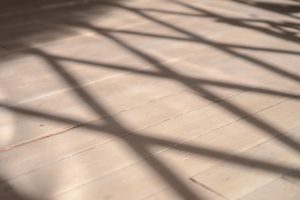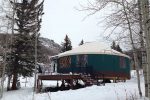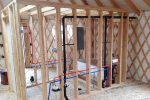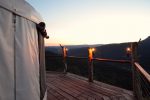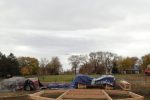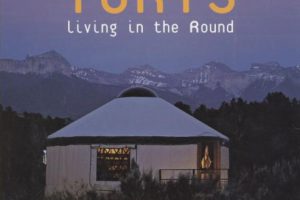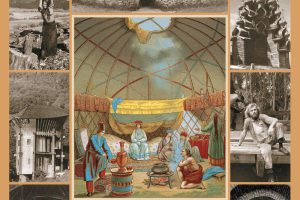Is it for you?
Main specs for American yurt companies (organized alphabetically). Updated December 2019. Pacific Yurts declined to provide information for this website.
Yurt Company Acronym Key
- BR = Blue Ridge Yurts
- CY = Colorado Yurt
- GL = Great Lakes Yurt Co
- LI = Living Intent Yurt Co
- NS = Nomad Shelter
- RO = Rainier Outdoor
- SD = Shelter Designs
- YA = Yurts of America
Company Contact
| Company | Website | Phone Number | |
|---|---|---|---|
| BRBlue Ridge Yurts | blueridgeyurts.com | [email protected] | (540) 745-7458 |
| CYColorado Yurt | coloradoyurt.com | [email protected] | (800) 288-3190 |
| GLGreat Lakes Yurt Co | greatlakesyurtco.com | [email protected] | (269) 808-3664 |
| LILiving Intent Yurt Co | livingintentyurts.com | [email protected] | (207) 350-9457 |
| NSNomad Shelter | nomadshelter.com | [email protected] | (907) 235-0132 |
| RORainier Outdoor | rainieroutdoor.com | [email protected] | (866) 483-6795 |
| SDShelter Designs | shelterdesigns.net | [email protected] | (406) 721-9878 |
| YAYurts of America | yurtsofamerica.com | [email protected] | (317) 377-9878 |
Company Details
| Company | Location | Year First Yurt Sold | Tour Available? |
|---|---|---|---|
| BRBlue Ridge Yurts | Floyd, VA | 2004 | |
| CYColorado Yurt | Montrose, CO | 1980 | |
| GLGreat Lakes Yurt Co | Grass Lake, MI | 2017 | — |
| LILiving Intent Yurt Co | Grass Valley, CA | 2015 | |
| NSNomad Shelter | Homer, AK | 1987 | |
| RORainier Outdoor | Tukwila, WA | 2004 | |
| SDShelter Designs | Missoula, MT | 2005 | |
| YAYurts of America | Indianapolis, IN | 1986 | — |
Yurt Info
| Company | Available Sizes | Max Snow Load* | Base Cost of 30' | Base Cost of 16' |
|---|---|---|---|---|
| BRBlue Ridge Yurts | 16', 20', 24', 30' | 60 psf | 60 psf | $13,047 | $7,299 |
| CYColorado Yurt | 16', 20', 24', 27', 30' | 15 psf | 95 psf† | $12,240 | $7,090 |
| GLGreat Lakes Yurt Co | 16', 20', 24', 27', 30' | 75 psf | 75 psf | $11,000 | $5,000 |
| LILiving Intent Yurt Co | 12', 14', 16', 20' | — | — | $6,000 |
| NSNomad Shelter | 12', 16', 20', 24', 30', 34', 40', 50' | 60 psf | 60 psf | $15,500 | $8,000 |
| RORainier Outdoor | 16', 18', 21', 24', 27', 30', 33' | 100 psf | 105 psf† | Eagle: $18,820, Raven: $13,358 | Eagle: $9,466, Raven $7,426 |
| SDShelter Designs | 12', 16', 20', 24', 27', 30', 35', 40' | 40 psf | 150 psf | $12,480 | $6,760 |
| YAYurts of America | 12', 14', 16', 20', 30' | 60 psf | 95 psf | $12,000 | $6,499 |
*(30' yurt without upgrades | 30' yurt with all upgrades), †Site specific engineering available for higher snow loads
Rafter Details
| Company | Wood Species | Base Rafter Size for 30' |
|---|---|---|
| BRBlue Ridge Yurts | Spruce | 2x6 |
| CYColorado Yurt | Doug Fir | 2x4 |
| GLGreat Lakes Yurt Co | Doug Fir | 2x6 |
| LILiving Intent Yurt Co | Doug Fir | — |
| NSNomad Shelter | Spruce | 2x6 |
| RORainier Outdoor | Doug Fir | 2x6 |
| SDShelter Designs | Western Tamarack (Larch) | 2x6 |
| YAYurts of America | Southern Yellow Pine | 2x6 |
Lattice Details
| Company | Wood Species | Lattice Thickness | Base Height of Wall |
|---|---|---|---|
| BRBlue Ridge Yurts | Poplar | 3/4" | 7' 4" |
| CYColorado Yurt | Doug Fir | 1/2" | 7' 2" |
| GLGreat Lakes Yurt Co | Doug Fir | 1/2" | 7' 4" |
| LILiving Intent Yurt Co | Bamboo | 1/2" | 6' 9" |
| NSNomad Shelter | Spruce | 7/8" | 7' |
| RORainier Outdoor | Doug Fir | 3/4" | 7' 4" |
| SDShelter Designs | Doug Fir | 7/16" | 7' 2" |
| YAYurts of America | Poplar | 3/4" | 7' |
Available Upgrades
| Company | Insulation |
Thick Roof Cover |
French Doors |
SIP Panels |
Glass Windows |
Awnings |
Rain Diverter |
Opening Dome |
Tinted Dome |
Water Catchment |
Wind & Snow Package |
10ft Walls |
Swappable Walls |
|---|---|---|---|---|---|---|---|---|---|---|---|---|---|
| BRBlue Ridge Yurts | — | — | — | ||||||||||
| CYColorado Yurt | — | — | — | ||||||||||
| GLGreat Lakes Yurt Co | — | — | — | — | — | — | — | — | — | — | |||
| LILiving Intent Yurt Co | — | — | — | — | — | — | — | — | |||||
| NSNomad Shelter | — | — | — | — | — | — | — | — | — | — | — | ||
| RORainier Outdoor | — | ||||||||||||
| SDShelter Designs | — | — | |||||||||||
| YAYurts of America | — | — |
Final Details
| Company | Lead Time | Shipping Available | Financing Available | On-site Construction Services | International Purchasing |
|---|---|---|---|---|---|
| BRBlue Ridge Yurts | 3-4 weeks | — | — | ||
| CYColorado Yurt | 5-8 weeks | ||||
| GLGreat Lakes Yurt Co | 6-8 weeks | — | — | ||
| LILiving Intent Yurt Co | 7 weeks | — | |||
| NSNomad Shelter | 6-12 weeks | ||||
| RORainier Outdoor | 3-7 weeks | ||||
| SDShelter Designs | 4-6 weeks | — | |||
| YAYurts of America | 2-5 weeks |
Considering a yurt? There are pros and cons to consider.
Many uses for a yurt
It’s true that most yurts are destined to become one of two things: either a short-term vacation rental or a dedicated home. However, there’s a wide range of other personal and business scenarios where a yurt may be the perfect option. Over the years, I’ve seen yurts used as fitness studios for yoga or dance classes. I’ve had more than one beer in a yurt at ski resorts across the country. Yurts have become wine tasting rooms at vineyards or classrooms at schools. Any outdoor-focused business looking for a unique venue or structure could probably utilize a yurt in some way.
On an individual level, not all yurts are built to live in. Some yurts are built to become art studios or workshops. Some may be a simple office or writer’s retreat. I know several people who have built a yurt as a temporary home after a fire or as a temporary residence while they build a larger, primary house.
The negatives of yurts
There’s no such thing as a perfect dwelling. There are pros and cons to every style of structure and a yurt is no exception. Many negatives of yurts can be solved or at least alleviated with some simple ingenuity. But by far, the biggest solution to many of these problems is the first decision one makes during this process: choosing the right property to build on. The simple truth, yurts are not designed to be lived in everywhere. That’s why you don’t see yurts built in major metropolitan areas or in ultra-extreme climates. The best place to build a yurt is out in nature in a mild climate on land that you own. Here are the details:
- Poor temperature control: Without some serious modifications, the internal temperature of a yurt will change drastically based on the outside temperature. If it’s freezing outside, it will be very cold inside. If it’s stifling hot outside, there’s a good chance it will be hot—if not hotter—indoors. A wood stove can help with the cold and fans or air conditioners can help with the heat. Some add more insulation to the walls akin to what you’d see in a house, but if that’s something you feel you need to do, building a proper roundhouse may be a better option.
- Noise level: With thin walls and insulation, the sounds outside will most likely be heard indoors to a degree that you wouldn’t have in a proper house. Sometimes this can be fantastic. I often hear owls at night or the howls of distant coyotes. However, with any yurt built relatively close to modern civilization, man-made sounds can creep their way inside. I can hear the low, subtle rumble of the highway ¼ mile away at all times of the day. We have also found ourselves under a major flight path. The sound of a passing plane occurs every 15 minutes. Music or a white noise machine can help mask these sounds, but they will always be there. The more remote your property is, the happier you’ll be with the noise levels inside.
- Not so temporary: While the traditional yurts you find in Central Asia can go up and back down in a matter of hours, modern yurts you will find in the US are far removed from their nomadic origins. Much more time, money and energy is invested in building these yurts, often to satisfy the requirements counties have invented (more on that here). If you assume—like I did—that your yurt could be built on leased land and moved at a later date if necessary, you are entering yourself into a world of pain. My biggest regret with this project was building the yurt on land owned by someone I barely knew. If I had waited patiently until I could purchase land of my own, I would probably feel quite the opposite.
The positives of yurts
Let me get off my soapbox… Ah, that’s better. Let’s look at the opposite side of the spectrum. There are plenty of upsides that are unique to yurts alone. From beginning to end, you’ll find many rewarding aspects of building and living in a yurt.
- Accessible, collaborative build: With the platform complete, we planned on building the yurt structure during one weekend in November. Half a dozen of our best friends gathered in Oregon to help. All but one of them had no experience building anything more than Ikea shelves. But just over a single weekend, we were able to construct an entire building all on our own with healthy communication and teamwork. The feeling of pride at the end was palpable among the group. It’s the perfect opportunity to learn something new and develop useful DIY skills.
- Circular living space: From my research, no one has quite put into words the magic of living within a circular space. I’m sure as hell not going to attempt anything profound here, but there is something really special about the feeling of being inside a yurt that you don’t get with a normal room or house. Maybe it has something to do with our profound connection to the round shape of our planet, the sun or jelly-filled doughnuts. I don’t know. It just feels calming and natural.
- Strength: The fundamental principles of a yurt’s design creates a structure that is surprisingly strong. The compression and tension of the walls and roof can hold thousands of pounds of weight from the snow. The round shape allows high winds to be diverted gracefully around the structure. Unlike a normal house, a yurt doesn’t rely on rigidity to be stable. Because of its flexible nature, a yurt can better withstand natural disasters like earthquakes.
Previous Chapter
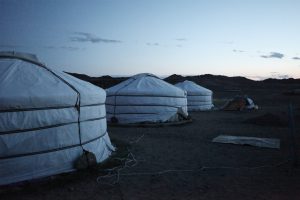
Yurt History
Next Chapter
